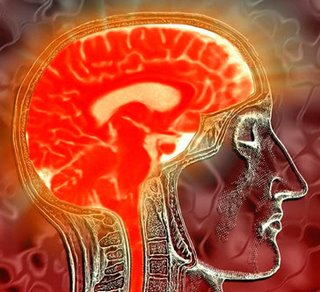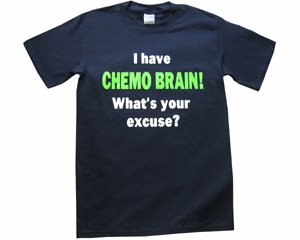Here’s an article that gives me pause. In
the August 20 “Well” medical blog in the
New York Times, Jane E. Brody comments on the possible overuse of medical diagnostic scans that could contribute to secondary cancers: perhaps as many as 1.5% of all the cancers that occur in the United States.
And why is this of such concern to me? To anyone who knows my medical history, it should be obvious. Ever since my non-Hodgkin lymphoma diagnosis in late 2005, I’ve received somewhere between two and five radiation-based scans a year: some of them CT scans, others CT scans combined with a PET scan. I had the greatest number of these during and just after my chemotherapy. In recent years, the number of scans has decreased: first, to about three a year, and now, two. With my indolent lymphoma continuing to snooze away, I seem, now, to have settled into a pattern of two alternating scans a year: one CT, the other PET/CT.
These are not quite full-body scans, but are pretty close to it: neck, chest, abdomen and pelvis. Everything but the arms, leg and head, in other words.
I’ve had so many scans, I’ve lost count.
Really. I probably should have kept a central log of all my scans, but I haven’t – although I suppose that information could easily be mined from my thick file at Dr. Lerner’s office.
Now, here’s the kicker. Just over a year ago, I had surgery to remove my cancerous thyroid gland. Was the thyroid cancer merely a matter of bad luck – a disorder I was destined to develop anyway, independent of the lymphoma? Or was it caused by something related to my previous cancer treatment - like radiation from all those diagnostic tests?
A CT scan delivers a relatively modest, measurable amount of radiation. In and of itself, one scan doesn’t amount to much. The question no one really knows the answer to is whether or not there’s a cumulative effect.
A PET scan is a whole other matter. With respect to radiation, PET scans are to CT scans as a double vodka is to a thimbleful of beer. They involve getting injected with a radioactive-glucose solution that courses throughout the body, carried by the blood.
Ever since getting diagnosed with thyroid cancer, I’ve wondered about the secondary-cancer thing - but reading this article brings that worry home once again. I know that, after a nuclear disaster like Chernobyl or Fukushima, the first thing people in the affected geographic region are supposed to do is
swallow potassium iodide pills to protect their thyroids. The thyroid, it seems, is the organ in the body most susceptible to radiation.
It's like the canary in the coal mine. Or, the uranium mine.
This next bit of information is, of course, anecdotal, but it gives me something more to think about. Last fall, when I went for my post-thyroidectomy radioactive-iodine treatment, I shared the treatment room that afternoon with a young Hodgkin lymphoma survivor who had undergone her chemotherapy at exactly the same time I’d had mine. She had Hodgkins and I non-Hodgkins, so our chemo regimens were naturally different, but presumably, in the years that followed, she received roughly the same series of diagnostic scans as I did – to make sure her cancer was gone, and stayed gone.
Two blood-cancer patients. Both treated for their cancer at the same time. Both develop thyroid cancer and have thyroidectomies at about the same time. Coincidence?
Maybe. Like I said, the “evidence,” such as it is, is purely anecdotal. Two cases do not a medical trend make.
But, still... it does make you think.
Of course, the radioactive-iodine treatments she and I both received – swallowing those hot pills, in order to fry any leftover thyroid tissue still floating around in our bodies – was a way-bigger jolt than anything delivered by a diagnostic scan. She and I ingested so much radioactive material, we had to keep our distance from our loved ones for several days afterwards. Granted, thyroid cancer was no longer an issue for either of us - we no longer had thyroid glands. But, what about our other organs?
Don’t get me wrong. I dutifully submitted to all those diagnostic scans and will continue to do so, because it’s important to keep a vigilant eye on my lymph nodes. Six years ago, I let my medical bartenders drip six highly-toxic chemo cocktails into my veins, knowing that at least one of the ingredients in those concotions, adriamycin - the one they call “the red death” - burns the skin on contact and is strongly suspected to cause secondary cancers in a small, but measurable percentage of patients.
If my lymphoma ever yawns, throws off the bedclothes and gets up to stumble around like Frankenstein's monster, one of the treatment options I'll want at the top of my list is radioimmunotherapy (Bexxar or Zevalin), which involves an injection of Rituxan bonded to radioactive material.
It’s all about the odds. We cancer patients say “bottoms up” to the chemo bartender. We shoot up with radioactive glucose like some oncological junkie. We smile and say “cheese” to the PET-scan photographer. And all because we know our odds are better with those interventions than without them. The oncological Russian-roulette revolver may hold considerably more than the traditional six rounds, but even if its rotating cylinder’s chambers are numbered in the hundreds, one of them does still hold a bullet.
We pays our money (or, our insurance companies do). And, we takes our chances.
It has ever been so, in Cancerworld.
 Once the bubbles reach their target, technicians direct a focused ultrasound beam at the tumor, which evidently makes the bubbles floating by adhere to the surface. Then, they zap the clusters of bubbles with a higher-intensity ultrasound signal, bursting them and spreading the chemo agents all over the tumor.
Once the bubbles reach their target, technicians direct a focused ultrasound beam at the tumor, which evidently makes the bubbles floating by adhere to the surface. Then, they zap the clusters of bubbles with a higher-intensity ultrasound signal, bursting them and spreading the chemo agents all over the tumor.




















